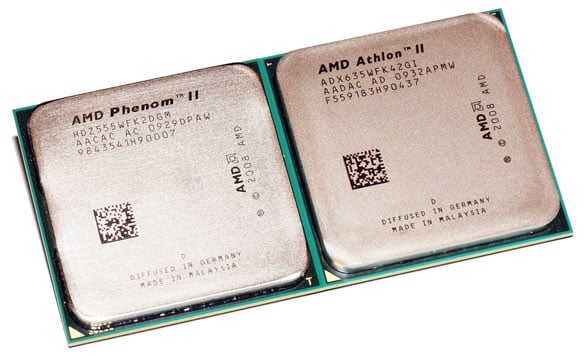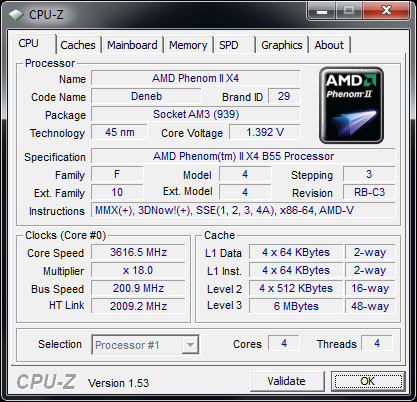
AMD has released 5 new CPUs for the New Year. Thanks to continued improvements in Global Foundries' 45nm process, AMD is delivering slight clock bumps for its dual, triple and quad-core processors while dropping prices of others.
The new line-up of processors AMD is introducing today consists of the following products...
Phenom II X2 555 - $99
Athlon II X4 635 - $119
Athlon II X3 440 - $84
Athlon II X2 255 - $74
Phenom II X4 910e - $169
The Phenom II X2 555 BE - AMD's Fastest Dual-Core
Remember the Phenom II X2 550 BE? That was a quad-core Phenom II with two cores disabled, but a full 6MB L3 cache. It was a beast of a dual-core CPU but AMD quietly pulled it off its price list months ago. You could still find the chips in retail and priced quite effectivley at $99, but the Core i3 530 manages to offer better performance at nearly the same price.
AMD's response? The Phenom II X2 555 BE. Still an unlocked Black Edition part, the 555 pushes its clock speed up to 3.2GHz. The extra 100MHz won't do much for performance but the price remains at $99. This chip now supports hardware C1E, like the first Athlon IIs. The hardware C1E means lower idle power consumption and it's courtesy of the new C3 Phenom II stepping.
Reviews :
AnandTech
Hot Hardware
Anandtech has unlocked the Phenom II X2 555 and managed to get it to a quad core at 3.2GHz. They used Gigabyte's GA-MA790FXT-UD5P motherboard. In its BIOS there's an option for Advanced Clock Calibration. All you need to do is set EC Firmware Selection to Hybrid, and ACC to Auto:

Overclocking is affected. With only two cores active the Phenom II X2 555 BE could run at 3.8GHz without any additional voltage. With four cores active, that number drops down to 3.6GHz.















